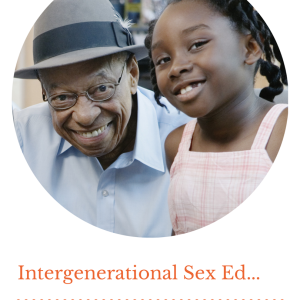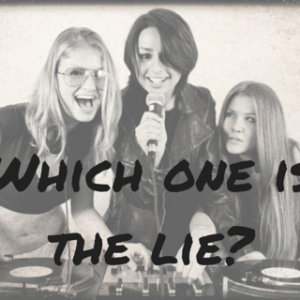My trainings with Bill are over for awhile, and so I have been pondering which manual and which lesson plan to turn to next. Tomorrow I am going to talk about Streetwise to Sexwise. It is one of those manuals that’s something of a classic around sex educator circles. The author, Steve Brown, tells me that he hears from sex educators that they learned how to teach out of this manual.
Today, though, I’m veering off-road from my stated goal of 500 lessons in 500 days. (“Already??,” I can hear you cry, “But you’re only on day 7! Out of 500!” And I respond, “Yep, because I’m crazy like that.”) Instead of telling you about a lesson or an activity, I want to tell you about something that is printed in the front matter of every manual that the Center for Sex Education publishes.
_____________________________________________________________________
Principles for Sex Education
It is important for teachers using this edition to recognize these principles and act upon them, since they illustrate basic philosophical and pedagogical approaches to comprehensive sex education. Educators who are mindful of these principles and examples will likely find additional ways to implement them as they teach the lessons.
1. All participants need and deserve respect. This respect includes an appreciation for the difficulty and confusion of addressing sexual issues and a recognition of the constellation of factors that contribute to those issues. It means treating all persons, both young people and adults, as intelligent individuals who are capable of making decisions in their lives.
2. Participants need to be accepted where they are. This means listening and hearing what people have to say, though we as educators might sometimes disagree. In general, we are much better off helping individuals explore the possible pitfalls of their attitudes rather than telling them what they ought to believe.
3. Participants learn as much or more from each other as from the educator. Often, if we let people talk, allow them to respond to each other’s questions and comments, and ask for others’ advice, they feel empowered and take responsibility for their own learning. It is much more powerful for a participant to challenge a peer’s belief or attitude than for the educator to do so.
4. Honest, accurate information and communication about sex is essential. For most of their lives participants may have received messages suggesting that sex is hidden, mysterious and something not to be talked about in a serious and honest way. Limiting what individuals can talk about and using vague terminology perpetuates the unhealthy “secrecy” of sex. Sexual information needs to be presented in an honest, accurate way.
5. A positive approach to sex education is the best approach. This means moving beyond talking about the dangers of sex and acknowledging in a balanced way the pleasures of sex. It means associating things open, playful, and humorous with sexuality, not just things that are grave and serious. It means offering a model of what it is to be sexually healthy rather than focusing on what is sexually unhealthy.
6. People have a fundamental right to sex education. They have a right to know about their own bodies and how they function. They have a right to know about any sexual changes that are occurring now and any others that may occur during their lifetimes. They have the right to have their many questions answered. People who have explored their own values and attitudes and have accurate information are in the best position to make healthy decisions about their sexual lives.
7. Gender equality and greater flexibility in sex-role behavior help all people reach their full potential. These two volumes strongly advocate the right of all people — regardless of their gender — to achieve their full human potential. Strict adherence to traditional gender-role behavior limits people’s choices and restricts their potential.
8. All sexual orientations and gender identities must be acknowledged. The inclusive nature of these lessons recognizes that there are diverse sexual orientations and gender identities, and some participants may identify as lesbian, gay, bisexual, transgender, intersex or questioning. It is important to create an environment that recognizes the needs of these often isolated and invisible individuals. Teaching frankly about diverse identities can benefit everyone, as participants may have concerns or fears about their feelings and perceptions of their gender and/or sexual orientation.
9. Sex involves more than sexual intercourse. Acknowledging this concept reminds participants that not only are there many ways to be sexual with a partner besides vaginal, oral and anal intercourse, but also that most of these other behaviors are safer and healthier than sexual intercourse.
_____________________________________________________________________
We humans are sexual beings from the time we are born until we die. Sex educators repeat this over and over again like a mantra, and these Center for Sex Education principles flow so beautifully from that statement.
I’ll be honest with you, the first time I read through a CSE manual, I might have drawn little hearts all over this page like a girl in love. These principles strike me not only as strong and powerful principles for a sex education manual, but as principles that we should all strive to live in our daily lives. Imagine that for just a minute. In fact, go back and re-read just the nine bolded sentences and ponder what it would mean to the world if we took these on as messages to live by. While they are not quite as inclusive as and are focused in a slightly different way than the brand new World Association for Sexual Health’s revised Declaration of Sexual Rights, they’re not far off either.
All of the CSE manuals start with these principles – be sure to peruse the Center’s entire library of manuals at the Sex Ed Store.






